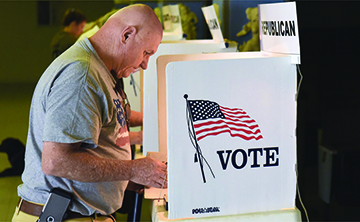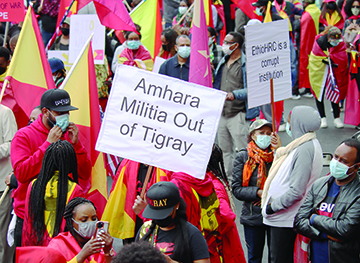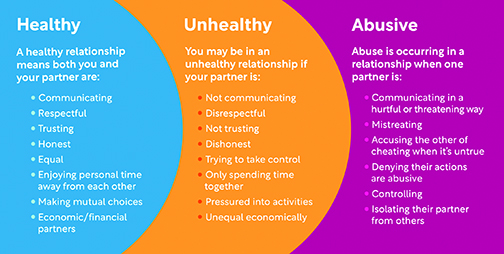
by Regan Bervar | May 26, 2021 | Glendale City News
 by Luke Schmaltz
by Luke Schmaltz
In the past year, the Denver commercial property market has been flipped upside down, run through the wringer, and hung out to dry. While circumstances appear bleak in some areas, the twists and turns of pandemic-induced social upheaval are not without glimmers of hope and outright indications of future solvency.
Commercial and residential real estate are symbiotic halves of a larger whole, and just as one directly affects the other, the balance between the two can take on surprising configurations. Such is the current state of affairs in the Mile-High City, and property professionals from both sides of the fence are forging forth with equal amounts of bullish determination, speculative flexibility and hopeful trepidation.

Downtown offices may not quickly repopulate, as many work-from-home folks have relocated to the suburbs.
Parallel Perceptions
From the viewpoint of residential real estate professionals, the commercial market is a cliffhanger, a head-scratcher, and an anomaly compelling enough to draw curiosity that is far beyond casual observation. Jennifer Barnes of eXp Realty, LLC has considerable experience in the residential sector, and has watched with piqued interest as her area of the market reacts to the changing commercial sector. This area of the market is inevitably affected by the overnight replacement of traditional office settings with entire industries of remote workers. “The draw to being in the city is gone,” she begins. “There has been a huge run [on residential properties] across the whole Front Range — especially places like Conifer, Evergreen, and Elizabeth,” she explains. “The whole downtown Denver market is not what it was — people are not clamoring to be down there right now because they are working remotely. I mean, why would you want to live in a congested area if you don’t have to?” Barnes was fortunate enough to be on the upside of the remote worker trend, unlike other large real estate firms with huge offices and sizable leases to boot. Her firm, eXp, grew during the pandemic due to low overhead while others were forced to downsize because “they didn’t have the revenue from home sales because they were shut down during Covid, but they still had huge office building leases to pay.”
Meanwhile, from a real estate inspector’s viewpoint, the commercial property shift has created circumstances reminiscent of the pre-marijuana retail boom. Robert Crawford is owner/operator of Colorado Complete Home Inspections, and he points out, “Before we had the cannabis industry, we actually had a lot of empty warehouses and empty retail spaces. Then, something came along which allowed new investors to buy up the available spaces at a fraction of the price. The vacuum left behind by the Covid reminds me of that. The landscape now versus back then bears a striking similarity,” Crawford explains. “You’re seeing ‘for sale’ and ‘for lease’ signs on retail spaces in some districts and among commercial warehouses alike.” So, it seems the stage is once again set to favor a buyer’s market. Perhaps this indicates that once again, another influx of outside investment capital and enterprise is already underway.
A Dual Perspective

Shane Henry of 303 Property is amazed at how many cash-solvent investors are standing by to scoop up retail spaces.
Shane Henry, owner of 303 Property, has been working as a broker in the Denver commercial and residential markets for eight years. “When Covid hit, I thought commercial real estate was going to totally take a dive, but it didn’t,’’ he begins. “There’s still a lot of people out there with money, so as soon as a retail space becomes available, someone else is waiting to swoop in and scoop it up. So, it’s really interesting because I thought for sure it was going to be the opposite. It blows my mind, to be honest.” Henry continues, “A lot of people are showing up from other states like California with a lot of money from having just sold property there. So, they can come in and pay cash for spaces in Colorado.” Case in point: strip malls. Henry explains the robust state of occupancy in most of these retail destinations, “I’m not seeing lots of vacancies in them. If anything, I’m seeing almost more of a demand for these spaces.”
Letters From The Front
Meanwhile, a cross-section of those working exclusively in the trenches of Denver commercial real estate reveals a wide variety of viewpoints.
-

Vincent Grandi with Keller Williams Realty Urban Elite thinks vacant commercial properties offer some obvious social solutions.
Vincent Grandi of Keller Williams Realty Urban Elite contends that the work-from-home directive has gained momentum that may not be totally reversed. He sees the vacancies in the office building sector of the commercial market as an opening to address the 500 lb. elephant in the proverbial room. “This could be an opportunity to address the homeless crisis with a windfall of micro-type condos” he explains. While this is merely speculation and not a hard-and-fast solution, Grandi is also quick to point out the consequences of office buildings and warehouse properties which remain empty for too long. “Leaving all that property vacant is just presenting opportunities for things that aren’t good such as graffiti, arson, vandalism, and theft.”
- Mark Ryan, a broker with eXp Commercial Real Estate, lays it out plain and simple with the office building situation. “The biggest eye opener for me was how people working from home had such an effect on property values. Commercial property shifted from a landlord’s market to a tenant’s market overnight,” he begins. “What I’m seeing is a whole lot of properties coming on as ‘reduced rate’ listings.” While this is the case with office buildings due to the rigid nature of their intended use, it may not apply to other commercial properties. “Retail is different, because it can be sliced up in so many different ways,” Ryan explains.
-

Michael Griffin of Madison Commercial Properties feels that office building occupancy will return as a fiscal necessity.
Michael Griffin is a Managing Partner at Madison Commercial Properties in Cherry Creek, and he sees the effect of the work-from-home contingency on office space as a temporary circumstance that will correct itself. “Over time,” he attests, “people will be getting back to work [in offices]. Yes, Covid affected office space, for sure, but the last six weeks have been really busy,” he explains. “For some industries, office dynamics and corporate culture rely heavily on in-person workplace environments. As a business owner, I know for a fact that it is crucial to directing, motivating and communicating with your staff.”
- Yvette Kimmel is a broker with Ai3 Properties, which handles a network of 10 office buildings in Southeast Denver. She paints an upbeat picture of the commercial real estate market, at least as far as her properties are concerned. “We have every reason to be encouraged” she begins. “We have been extremely busy, and the only thing that is different in our business is that our tenants are just kind of moving around. In some cases, it is to smaller suites … but for the most part, we are staying very full,” she explains. “I think we are in an enviable position because we are not in prime downtown real estate, and we are not in prime DTC real estate — we’re right between those, so we’ve got people moving out of those expensive suites into something that is still in a prime location without those high prices per square foot,” she continues. Kimmel is confident that office culture is an integral part of American work life, saying, “Part of the experience is the social experience.” Kimmel also contends that, as society opens back up, in-person retail may also be in for a much-needed surge. “We don’t all want to be buying from Amazon for the rest of our lives,” she says.
-

Rachel Colorosa of Colorosa Commercial Properties takes a data-driven approach to her informed speculations.
Rachel Colorosa, Executive Director of Colorosa Commercial Properties, is a self- professed “statistics geek” and a graduate of Colorado College with a B.A. in International Political Economics. When analyzing the effect of Covid-19, the work-from-home contingency and the stark vacancies in large commercial office buildings — she dug into the numbers. She cites a series of recent surveys by Gensler — a global (50 locations worldwide) architecture, design, and planning firm focused on data-driven insights. “The data shows that, because of Covid and social distancing, people don’t like confined spaces — especially elevators,” she begins. “This means large downtown office buildings may not recover, but suburban office facilities under four stories will be at capacity.” Colorosa sees the current trends in retail, office, and industrial real estate as three intersecting lines which form an “x” with a horizontal line through it. “There’s a negative trend in retail, office is flatlining, and industrial is going way, way up,” she explains. Based on the Gensler data, Colorosa feels “we’ll see a lot of retail turned into offices” and “empty big box retail spaces will be repurposed as call centers or Amazon fulfillment centers.”
Currently, diagnosing the status of commercial real estate in Denver is speculative, and relies heavily on the informed perception of the beholder. At least one thing is clear — things are happening — which is a welcome change from last year’s grim alternative.

by Mark Smiley | May 26, 2021 | General Featured
Fan Appetite For Live, In The Flesh Performances Have Valley Venues, Events Big And Small Quickly Reemerging
by Glen Richardson
 When Denver and the state said goodbye to capacity limits and distancing requirements last month, artists, industry professionals, and anxious fans quickly started turning the page. The decision — the most momentous yet since the pandemic hit — has live gigs returning to outdoor/indoor culture and music venues large and small. Moreover, theatre and concert dates that were canceled in 2020 are being flipped to 2021.
When Denver and the state said goodbye to capacity limits and distancing requirements last month, artists, industry professionals, and anxious fans quickly started turning the page. The decision — the most momentous yet since the pandemic hit — has live gigs returning to outdoor/indoor culture and music venues large and small. Moreover, theatre and concert dates that were canceled in 2020 are being flipped to 2021.
There are, of course, still parameters: Indoor events of more than 500 people still must get approval. Outdoor seated and ticketed events in spaces 30,000-sq.-ft. or greater must also get approval to increase their capacity.
The biggest pay off as live performances commence again is to see the joy actors and musicians feel getting back in theatres and concert halls. It’s equally exciting to see the audience reaction as they finally get to attend and witness live shows again. After a year-plus of shutdowns, the opening-up of capacity limits contains seeds of optimism for a bright summer of entertainment. Setbacks, of course, are still possible. Even if everything goes well, it will likely be next year before the live experience gets fully back to normal.
Here’s what’s been announced in the early days since capacity limits and distancing requirements were nixed by the city and state officials:
Theatre

Creek’s Act Is Back: After 500 days without a live performance, Cherry Creek Theatre is reopening with Tenderly Aug. 6-29. Susie Snodgrass is shown in photo welcoming patrons to the last live show in Jan.-Feb. 2020.
Cherry Creek Theatre — After more than 500 days without a live performance, Cherry Creek Theatre is reopening in the 400-seat Elaine Wolf Theatre in the JCC Community Center. Tenderly, the Rosemary Clooney musical, is the company’s 11th season opener Aug. 6-29. Told through her signature songs, the two-person musical takes audiences beyond the public persona limelight with an intimate look at her personal life from the Appalachian roots to Hollywood stardom. Cherry Creek Theatre’s previously announced titles, Steel Magnolias and Jest a Second run in the Wolf Oct. 1-24 and Oct. 29-Nov. 21. Information: 303-316-6360.
Buell Theatre — When Covid hit last year the Denver Center for the Performing Arts (DCPA) canceled or postponed all of its theatrical productions, including locally produced and touring Broadway shows. Prior to the latest announcement, DCPA had disclosed the resumption of indoor, in-person productions starting with Disney’s The Lion King, Dec. 2-Jan. 2. The Tony winning show is known as much for its music and moving story as it is for its artful costumes, puppetry and choreography. Hamilton is set to follow The Lion King Feb. 22-March 27, 2022. My Fair Lady, 1776, Mean Girls, and Ain’t Too Proud initially announced for this fall were postponed until 2022. With restrictions being lifted in other major cities, it is conceivable, but doubtful, that one or more shows could be brought back this fall. Information: 720-865-4220.
Arvada Center — As lights come up and the curtain rises again, the Arvada Center is opening the 2021 season with I Do! I Do!, Sept. 10-Oct. 10. The two-person musical is a touching story that follows the sweet and sour moments of 50 years of love and marriage. Information: 720-898-7200.
Outdoor Concerts

Live Concerts Return: Swallow Hill Music is bringing the Shady Grove Picnic Series back to Four Mile Historic Park on Thursday evenings June 3 through Aug. 26, 6:30 p.m. Hal Aqua & The Lost Tribe kick off the series on June 3.5
Shady Grove Picnic Series — Shuttered last summer, Swallow Hill Music has announced it is bringing the Shady Grove Picnic Series back to Four Mile Historic Park on Thursday evenings starting June 3 and ongoing through Aug. 26, 6:30 p.m. Hal Aqua & The Lost Tribe kick off the series on June 3, followed by Dakota Blonde on June 10. Cary Morin & Ghost Dog entertain on June 17, followed by Extra Gold June 24. Information: 303-777-1003.
DCPA Galleria & Sculpture Park — A series of open-air, outdoor cabaret concerts are coming to the Galleria and Sculpture Park beginning with an Evening of Jazz with Sheryl McCallum June 5 at 3 p.m. and again at 5:30 p.m. The Colorado Symphony follows with a series of outdoor chamber music concerts under the glass in the complex, June 17-20, 6 p.m. Information: 720-865-4220.

Music In The Gardens: Evenings al Fresco is returning to the Denver Botanic Gardens on select Mon.-Wed. June 7-Aug. 4, 4:30-8:30 p.m. Attendees can stroll the grounds during the event. Photo: Scott Dressel-Martin
Denver Botanic Gardens — The Garden’s Summer Concert Series was canceled earlier this year. Produced in partnership with Swallow Hill Music, some shows may possibly return. Swallow Hill and York Street, however, are bringing back Evenings al Fresco on select Mon.-Weds. from June 7 to Aug. 4, 4:30-8:30 p.m. The season opens with Matt Skellenger and his jazz group. Information: 720-865-3500.
City Park Jazz — The nine free Sunday concerts at Denver’s City Park Pavilion are returning June 13-Aug. 8, 6-8 p.m. except the Brass Band Extravaganza June 20, 5-8 p.m. Highlight event is a Denver Jazz Heritage Celebration featuring the El Chapultepec All Stars, July 25. The event is also celebrating the life of Denver jazz legend Freddy Rodriguez Sr. who died of Covid. His son, Freddy Jr., will play at the show.

Jive In The Park: The nine day free Jazz in City Park concerts return June 13-Aug. 8. Highpoint is the Denver Jazz Heritage Celebration featuring the El Chapultepec All Stars (pictured) on July 25.
Red Rocks Amphitheatre — The storied U.S. venue sat empty most of last year, but is likely to lead Denver’s live music comeback with rapid additions of shows. It had already opened to 2,500 people per show in March. Top upcoming shows include Big Head Todd & the Monsters June 12-13 and Chicago on June 17. Two Days of Reggae on the Rocks returns Aug. 21-22. Information: 720-865-2494;
Levitt Pavilion — The Ruby Hill Park venue kicked off the season in May announcing 10 free concerts through Sept. 18. With capacity lifted, however, look for the site to add paid concerts as early as July 4. Information: 303-578-0488.
Indoor Concerts

She’s Got Rhythm: Heidi Schmidt sings with the Colorado Jazz Repertory Orchestra performing at the Lakewood Culture Center June 6. Photo: Elijah Patchen
Swallow Hill Music — Swallow Hill has announced it is launching eight concerts in Daniels Hall. Performances begin with Tony Trischka on Sept. 10, Carrie Newcomer Sept. 11, followed by the Sons of the Pioneers on Sept. 25. Announcement of added shows likely will come quickly. Information: 303-777-1003.
Mission Ballroom — Like other indoor venues, the Ballroom has been booking events for months. But expect capacity crowds in the 4,000 seat building on July 4 when Zeds Dead has been booked, followed by Primus on stage July 30. Information: 720-577-6884.
Lakewood Culture Center — Look for in-person crowds of blues-jazz lovers to fill the theatre as the Colorado Jazz Repertory Orchestra is booked to perform the best of Count Basie and other renowned jazz artists June 6, 2 p.m. Information: 303-987-7845.
Arapaho Philharmonic — Proof there’s light at the end of the tunnel for live performances, the Philharmonic plays American Masters Old & New at the First Church of the Nazarene on E. Hampden Ave. June 11, 7:30 p.m. The evening of music pairs Aaron Copland’s Appalachian Spring Suite with works by modern composers. Information: 303-781-1802.

by Charles Bonniwell | May 26, 2021 | Editorials
 Mark Twain famously said: “If voting made any difference, they wouldn’t let us do it.” His remarks certainly apply to Colorado today as the new Colorado Transportation Bill SB21-260 demonstrates. Colorado voters have repeatedly declared, since 1992 with the adoption of the Taxpayer Bill of Rights (“TABOR”), that they wanted to be able to vote on approving new tax increases. Similarly, Colorado taxpayers have repeatedly said that they do not want new taxes for roads. In fall of 2019, Proposition CC failed which would have allowed the state to keep the refunds that would have otherwise gone back to taxpayers under TABOR for roads. In the fall of 2020, voters turned down two Propositions, 109 and 110, which would have raised taxes for roads. In addition the voters approved Proposition 117, a measure requiring voter approval on fee hikes that generate more than $100 million in revenue over five years.
Mark Twain famously said: “If voting made any difference, they wouldn’t let us do it.” His remarks certainly apply to Colorado today as the new Colorado Transportation Bill SB21-260 demonstrates. Colorado voters have repeatedly declared, since 1992 with the adoption of the Taxpayer Bill of Rights (“TABOR”), that they wanted to be able to vote on approving new tax increases. Similarly, Colorado taxpayers have repeatedly said that they do not want new taxes for roads. In fall of 2019, Proposition CC failed which would have allowed the state to keep the refunds that would have otherwise gone back to taxpayers under TABOR for roads. In the fall of 2020, voters turned down two Propositions, 109 and 110, which would have raised taxes for roads. In addition the voters approved Proposition 117, a measure requiring voter approval on fee hikes that generate more than $100 million in revenue over five years.
None of it mattered in the least. Under SB21-260 the state legislature imposes an estimated $4 billion in new fees over 10 years for so-called transportation needs. That is an estimated $1,750 per household. How did they do it? Well, they divided the fees into four different enterprises, none of them individually exceeds the limit. One other fee, however, easily exceeded the limit, but they put that fee into a Highway Users Tax Fund, and since it is not an enterprise, it does not need voter approval.
One would think the Colorado courts would strike down such shenanigans, but we are assured by the conservative Independence Institute that the Colorado Supreme Court would find a way to approve the same. Given the black eye the Colorado judiciary has gotten from the discovery that the Judicial Department and Colorado’s former chief justice awarded a multimillion dollar contract to an employee to prevent her from disclosing incidents of workplace misconduct and sex discrimination, the courts might want the citizens to at least think they are not so biased that they can render impartial rulings, but apparently not.
The solution the Independence Institute gives us, is that ultimately the voters can punish those legislators who passed the legislation over the wishes of the voters. But in Colorado that has become a joke. Mail-in ballots and ballot harvesting in Denver make it impossible for anybody but a Democrat to win statewide office and assures a Democrat controlled State House and State Senate. That is why the State Legislature could care less what the voters want or do not want.
 There is at least a silver lining in all of this. Voters have indicated that they do not want new taxes or new fees used to build and repair roads and bridges, and under SB21-260 very little of the money will be used for that. It is estimated the roads and bridges will be involved in only 17% to 18% of the spending and rest used for subsidies for electric cars and multimodal transportation. So, after a flurry of spending the roads in Colorado will remain highly congested and in poor repair. Nothing will change except the lightening of the public pockets.
There is at least a silver lining in all of this. Voters have indicated that they do not want new taxes or new fees used to build and repair roads and bridges, and under SB21-260 very little of the money will be used for that. It is estimated the roads and bridges will be involved in only 17% to 18% of the spending and rest used for subsidies for electric cars and multimodal transportation. So, after a flurry of spending the roads in Colorado will remain highly congested and in poor repair. Nothing will change except the lightening of the public pockets.
You could, of course, call your duly elected state representative/senator but many of them are not even bothering these days to take such calls or read constituent mail. Why should they? In case you have not figured it out yet, you don’t live in a democratic republic in Colorado, but an interesting form of an oligarchy. You can have fun voting, relieved of any burden that your vote, as Mark Twain noted, “makes any difference.”
— Editorial Board

by Regan Bervar | Apr 23, 2021 | General Featured
“Rather than turning the page, it’s much easier to just throw the book away.” — Anthony Liccione
 by Luke Schmaltz
by Luke Schmaltz
Sometimes, the greener grass on the other side of the fence is attainable — as long as you’re willing to go 199 miles south (three hours and three minutes by car) to get there. Trinidad, Colorado, is a former mining town with three-or-so centuries of history, a patchwork topography of dilapidation and new development and a lot of potential.
As Denver’s metropolitan growing pains metastasize into cosmopolitan cancers, a few longtime advocates and sworn spouses of the Mile High City are doing the unthinkable — they are eyeing new climes in hopes for a fresh beginning. Once upon a not-too-distant past, Denver was the best kept secret of the Mountain West region. Soon, however, it became a blaring advertisement, then an oversaturated trend, and is now a hyper-capitalized, ultra-modern, less-remarkable version of its former self.
While recent transplants are none the wiser, longtime residents pine for the old times. The days of one-of-a-kind, mom-and-pop joints and relatively safe neighborhoods where you could find a spot to park your car in front of your affordably-priced place to live.
While Trinidad has been patiently waiting like a distressed maiden on the side of the freeway, its rescue had to occur in stronger gestures than just well-meaning sentiments. Those have finally arrived in the strongest form of statement possible: commerce. Movers and shakers not only from Denver but surrounding areas are pouring their assets and creative juices alike into redeveloping a once-thriving metropolis in the effort to contribute to a newly-emerging urban economy.
The Broadway Cabal

Jim Norris and Matt Meygasi of Mutiny Information Cafe are set to open a second location in Trinidad, Colorado.
Jim Norris and Matt Meygasi, co-owners of Mutiny Information Cafe, often look out of their shop’s front window across Broadway at their music venue neighbors, The Hi-Dive. The latter is owned by Curt Wallach and Suzanne Magnuson and has seen South Broadway fluctuate from a booming stretch of business development to its current state of shuttered, Covid-19-induced squalor. The latest commonality between the two teams is not that they share property in an embattled district of Denver, but that they are expanding operations into the untapped and exponentially promising town of Trinidad.
Norris and Meygasi will soon be opening a second location of the locally beloved and internationally infamous Mutiny Information Cafe. Meanwhile, Wallach and Magnuson will be opening a second bar/ music venue in the currently fallow Trinidad Lounge. Wallach and Magnuson have partnered with Denver trailblazer Kayvan Khalatbari as 50/50 owners of the bar and adjacent retail space. Mutiny Information Cafe will be their first tenants.
These migrating enterprises are a testament to the scrappy, independent, forward-thinking character of many Denver DIY businesses, which are disappearing at an alarming rate due to Covid-19 restrictions and the hyper-capitalization that is synonymous with gentrification. In addition to running unique businesses vital to the personality of South Broadway, the proprietors of Mutiny and Hi-Dive possess healthy doses of hope and the desire to work hard to create a better future.
Thus far, the town of Trinidad at large is welcoming new businesses with open arms. Mayor Phil Rico explains, “We are trying to improve our economy and become more diversified. People who want to move down here and open businesses — they are welcome to it. New businesses will boost our local economy and hopefully give residents who are already here some other options that may not be available right now.”
New Beginnings

Kayvan Khalatbari is a Denver business innovator who is expanding his progressive ideas to an untapped market.
Kayvan Khalatbari is a well-known Denver figure in many circles, primarily those of business, art and politics. The former mayoral candidate continues to blaze an entrepreneurial trail across the city, providing jobs, opportunities and outreach. His various ventures include (or have included) a beloved chain of dine-in/takeout joints known as Sexy Pizza, a cannabis dispensary, a consulting business, the widely-revered Sexpot Comedy collective, and more. After years of grassroots community building that was relentlessly countered by an unchecked, city-wide thirst for corporatization, Khalatbari’s gaze began to scan the landscape in search of more fertile grounds for his enterprises.
When asked about the primary drivers that swayed him to expand into Trinidad, Khalatbari explains, “I have trouble sleeping and breathing in Denver, the traffic, and frankly — the number and the type of people that have moved to Denver recently. It’s a lot of folks who seem really excited about the party aspect of Denver while not offering anything to the community, not offering back anything of substance.”
As a front-seat witness to gentrification, Khalatbari pulls no punches. “I’ve seen a lot of things I really enjoyed about Denver fall by the wayside [such as ] music venues, restaurants, and friends moving away. When I’m in Denver, even before the pandemic, I largely just stayed at home and had friends over. There’s nothing unique about it anymore. It’s pretty much in line with other major cities in terms of the types of places it has to hang out in and the types of people you’ll encounter. That’s what’s unique about Trinidad. I think, in a lot of ways, it’s more diverse than Denver.”
Khalatbari clarifies that he is in no way dismissing the city that has been so good to him and is quick to recognize Denver’s enduring merits. “I don’t want to make it sound like I despise Denver. I still love Denver; it has given me everything professionally that I could have ever asked for. I still live there most of the time, my girls still go to school there, I still have businesses there … but it’s just run its course and as I get older it makes sense for me to plant roots in a place that’s a little more long term, you know, for my mentality and my sanity.”
Moving forward, Khalatbari has purchased several properties in Trinidad that require varying degrees of remodeling, repair and TLC. Among these are The First Baptist Church, a large retail space in the downtown area, the Trinidad Lounge, an historic train depot, and a residential property. The local community is tight-knit and includes families and business interests that have been established in the area for generations.
Natural wariness of strangers aside, Khalatbari explains that the reception of himself and other outsiders looking to contribute to Trinidad’s development and revitalization has been overwhelmingly positive. “In the eight months I’ve been here, I’ve had conversations with probably half the city council, and I’ve met with tons of people across the city and for the most part everyone has been very supportive. I’ve been overwhelmed with the people in this town supporting wherever they can, wanting to collaborate, wanting to do good things, to feel the energy — it’s pretty palpable around here I’d say.”
Khalatbari underscores the importance of working with the Trinidad community and other outside investors so that, moving forward, the city as a whole can avoid becoming just another hyper-capitalized, unattainable swath of Colorado gentrification. “There’s a genuine fear of this becoming another inaccessible place in Colorado. One of the reasons I moved here is to see this town that has so much potential, but hasn’t had the investments, come to life while avoiding that sort of an outcome. I work a lot with worker cooperatives and employee-owned businesses. It is capitalism, sure, but it’s the shared economy capitalism. My pizzerias are employee-owned, and I would love to see that kind of model take hold in a place like this.
Wally’s World

Trinidad, Colorado is a city of 9,000 people, most of whom are ready to embrace redevelopment.
Wally Wallace is the Economic Development Director for the City of Trinidad. What the city planners may not have known when they hired him is that he’s also got a creative streak that makes him a seriously valuable asset to the city’s future. A comedian and a musician, among other pursuits, Wallace’s excitement about the city is infectious. He has a litany of proposed events queued up for consideration including Spaghetti and Western festival (an homage to the city’s Italian population), comedy events, themed bicycle rides and a weed-picking enthusiasts’ initiative to rid the town of goat heads.
He mentions Fisher’s Peak State Park — the recently-opened massive open space project that is now the second largest state park in Colorado. “They are projecting that this could potentially bring in up to $15 million into this community per year,” Wallace explains. “We are working on an interstate trail system where people will be able to hike and bike back and forth between Colorado and New Mexico.”
Wallace is responsible for introducing Khalatbari to Trinidad and explains how another Denver innovator — Dana Craw-ford — is making waves locally as well. Crawford is famous for the renowned and highly successful remodeling of Larimer Square and Union Station in Denver. She is currently spearheading the $18M remodel of the Fox Theater in Trinidad, which is a near-exact small-scale replica of NYC’s Carnegie Hall.
Send In The Skilled Tradespeople

The Downtown Trinidad Development Group welcomes Denver businesses and skilled tradespeople alike.
Meanwhile, across town, Karl Gabrielson, the director of the Downtown Trinidad Development Group is looking at the big picture. Similar to Mayor Rico, Khalatbari, and Wallace, he acknowledges the concern that updating the city might erase its small-town feel. “We are a long way from there,” he explains. “We are still in the early stages of redevelopment, but the conversation has begun.” He explains. “Trinidad has been boom and bust over and over again and we need to look at long-term sustainability — to develop a business environment that can level out those ups and downs.”
Between an investment group from NOLA planning to build a boutique hotel and Phil Long Ford Dealership owner Jay Cimino sinking millions into the revitalization effort, it has also become apparent that Trinidad needs housing and tradespeople in order to sustain the effort and provide for new arrivals. By and large, Gabrielson is optimistic, saying “Overall, it’s a great time to experience Trinidad. It’s been overlooked for a long, long time.”

by Regan Bervar | Apr 23, 2021 | Glendale City News
“The world is divided into armed camps ready to commit genocide just because we can’t agree on whose fairy tales to believe.” — Ed Krebs
 by Luke Schmaltz
by Luke Schmaltz
Daniel Woldu is a resident of Aurora, Colo., and a member of the international Tigray community. He has family members living in the Tigray region of northern Ethiopia. He watches in horror as online CNN footage (leaked from a soldier-turned-whistleblower) shows a military squadron slaughtering his ethnic peers in illegal extrajudicial executions. He is witnessing the genocide of his people — which is concurrently taking place.

Stateside demonstrations raise awareness of a humanitarian crisis. Photo by Endale Getahun
Woldu is becoming increasingly distressed, as a member of his immediate family traveled to the Tigray region in early September. The region has since been invaded by its own country’s army — an initiative ordered by Ethiopian Prime Minister Abiy Ahmed. As a result, all communication was completely disabled. Although some telephone service has recently been restored, Woldu endures long stretches of worry — not knowing the fate or whereabouts of his gravely endangered family member. (Identity withheld at Mr. Woldu’s request). Speaking for his Tigray community at large, Woldu explains, “This is something the majority of our community members are facing. They have family members who are stranded and it’s hard to know their whereabouts or even if they are still alive or not.”
The Walls Close In
On November 4, 2020, while the rest of the world was fixated on the results of the U.S. election, the invasion of Tigray went largely unnoticed. The initiative began by blocking the main conduit of goods, services and commerce into the region and by cutting off all telephone and internet connections and shutting down the electrical grid. The Ethiopian National Defense Forces were then deployed along with aerial bombardments. Abiy declared the campaign was a “law and order” operation against domestic terrorists. Yet, the atrocities being committed by Abiy’s forces — which reports confirm as weaponized rape and indiscriminate murder — did not come to light until they were brought to the fore by Amnesty International. To make matters worse, the campaign has been joined by troops from the northern neighboring country of Eritrea, who are acting in allegiance with Abiy’s federal troops. To further complicate matters, Tigray is in an ongoing retributive dispute with militias from the western bordering region of Amhara, who are attempting to annex Tigrayan territories. Essentially, Tigray is surrounded on all sides.
Ulterior Motives

Ethiopian Americans of Denver show their support for their families in Tigray. Photo by Endale Getahun
Although Abiy’s campaign was presented to the global community as a peacekeeping necessity, it is largely recognized that the invasion was a result of long-simmering tensions between Ethiopia’s federal government and the regional government of Tigray. While the conflict is taking place on the other side of the globe, it is having a profound effect on many stateside communities. One such community is the Ethiopian populace of the Denver/Aurora region which includes around 30,000 residents — some foreign born and others first-generation Americans. A small segment of this community identifies as Tigrayan, which is ethnically distinct from other Ethiopian communities. This dynamic makes matters worse for people like Daniel Woldu, as long-held tensions between ethnicities driven by religious differences and cultural bias are being reignited by the conflict in Ethiopia and carried out in American communities. Woldu explains. “Abiy’s propaganda is so that the general population does not feel bad for being complicit with genocide.”
To The Streets

War-torn Tigray region of Ethiopia hits home with Denver/Aurora residents.
For this reason, members of the Tigray community in Colorado and in cities across the nation have taken to staging protests. Their mission is to spread awareness of the humanitarian crisis and to put pressure on American authorities to take action and stop the ongoing genocide of their people. Peaceful protests are taking pace in Washington, D.C., Denver, Los Angeles, New York City, Louisville, Las Vegas, and many others. Multiple marches on Colorado’s State Capitol as well as candlelight vigils at area religious centers are bringing the local Tigray community together, but so far, they have not swayed local officials to appeal to their counterparts in Washington to intervene. The overarching concern of the citizens is that Ethiopian federal troops are not allowing the United Nations into the region to provide humanitarian support to refugees, many of whom they are related to. While this is having some influence, activists like Daniel Woldu are painfully aware that it is not enough. “While they [U.S. Government] have put demands out there,” he says, “they have not been able to stop the [Ethiopian] military.”
To The Airwaves

Denver’s Endale Getahun broadcasts the ongoing crisis in his home country.
Among members of the Denver/Aurora Ethiopian community, journalist Endale Getahun is working overtime reporting the events in Tigray as well as the ongoing protests in communities across the United States. Getahun broadcasts via Ethiopian Community Television and radio station KETO 93.9 FM. He explains that not all stateside Ethiopians are sympathetic to Tigray. “The majority of Ethiopians do not have sympathy for Tigrayans due to predisposed bias,” he says. Getahun also makes a clear distinction between Abiy’s propaganda, his claimed intentions and the subsequent actions of his military campaign. “When the government of Ethiopia launched the attack — to convince the general population — they said Tigrayan insurgents had attacked the military base in Tigray where the federal troops were stationed. But those troops have been there for 20-plus years — some of them are married to Tigrayans — so that was just an excuse.” He explains. “And now, since the power, communications and internet have been down, a lot of loved ones, a lot of people around the world, cannot reach their families, send money, food or medicine. Instead of apprehending the local [Tigrayan] leadership like they said they were going to do, they are trying to wipe out the whole Tigrayan population.”
The War At Home
Meanwhile, Daniel Woldu is still hopeful that his stranded family member can somehow, by some means, make it out of war-torn Tigray and back home to Colorado. “[They] are scared to travel because of what might happen.” he says. “Who knows, they may be one of the unlucky ones who steps out the door and is met by Eritrean troops.”
Woldu and others have met with local representatives to voice their concerns. “We’ve had conversations, as a community, with our congressman — Jason Crow — but those are just conversations. There are no actions behind them,” he explains. “The problem is that there are other Ethiopians in our community who are saying ‘you have to stay away from internal problems in Ethiopia.’ There is a genocide going on and they are advocating that the U.S. should not take any action.” Woldu cites the ongoing divide between Ethiopian ethnicities and how the Tigray people are just 7% of the country’s total population, which is reflected in Ethiopian communities the world over.
Daniel Woldu is also a member of Omna Tigray — a national organization of young professionals dedicated to spreading awareness of the humanitarian crisis affecting the Tigray people (omnatigray.org).

by Regan Bervar | Apr 23, 2021 | Travel
 By Luke Schmaltz
By Luke Schmaltz
At this time last year, if you were to offer someone a set of guidelines for maintaining mental stability, you’d probably get a well-deserved smack in the mouth.
Now that circumstances are settling into a cautious clip toward not crazy, some folks are hoping to reclaim their sense of sanity.
There are simple steps you can take to stop the negative internal chatter, calm your mind and exact some mental clarity so that you can enjoy yourself when you get a chance. Also, an approach with reasonable expectations may be better than a strict regimen for the simple fact that you shouldn’t be stressed out about trying to relieve mental stress. Here are a few strategies to consider based on simplicity of the activity, scientific research, and quantifiable results.
Move Yourself
 In May of 2019, research fellow Karmel Choi, of the Harvard T.H. Chan School of Public Health, published a study on the causal connection between physical activity and depression. The study used Mendelian randomization to assess the genetic data of hundreds of thousands of people from two large databases. The finding offered measurable proof that movement does indeed protect against depression more so than the notion that depression makes you move less. Movement means just that; not fancy exercise, (although that won’t hurt) just the simple act of getting up off the couch and going for a walk, mowing the lawn, doing the laundry, dusting off the blinds and yeah — maybe a few jumping jacks.
In May of 2019, research fellow Karmel Choi, of the Harvard T.H. Chan School of Public Health, published a study on the causal connection between physical activity and depression. The study used Mendelian randomization to assess the genetic data of hundreds of thousands of people from two large databases. The finding offered measurable proof that movement does indeed protect against depression more so than the notion that depression makes you move less. Movement means just that; not fancy exercise, (although that won’t hurt) just the simple act of getting up off the couch and going for a walk, mowing the lawn, doing the laundry, dusting off the blinds and yeah — maybe a few jumping jacks.
Reach Out
A 2014 report issued by the National Institute of Health (NIH) presented research on the effects of loneliness on psychiatric disorders and physical health. The study defined loneliness not as a condition caused by being alone, but rather by being “without some definite needed relationship or set of relationships.” The evidence presented links loneliness to a litany of mental conditions including depression, Alzheimer’s, and alcoholism, as well as physical maladies such as low-grade peripheral inflammation which can lead to a host of other serious conditions. The simple act of speaking regularly with friends and family with whom you have a genuine connection can assuage loneliness. Community and religious leaders can also lend a caring ear, while volunteering with charity organizations or adopting a pet can be workable options as well. Plus there are free support outlets such as The Lonely Hour Podcast, the Daily Strength networking service, the National Suicide Prevention Line and many more.
Log Off

Loneliness has a major impact on mental health.
Most people, regardless of age, can grasp the fact that scrolling through your Twitter feed for hours on end is not the equivalent of reading, does not replace human interaction and does not stimulate critical thinking. Regardless, according to statistica.com, the average person worldwide spent 145 minutes a day on social media in both 2019 and 2020. A recent study by Cureus, which was published by the National Institutes of Health, presented evidence gleaned from 28 scholarly articles on the effect of social media on mental health. Anxiety and depression were found to be the most com-
mon disorders linked to habitual social media use, and that these conditions were heightened in females and passive users who only read and do not post. Thankfully, you have many modern decades of human behavior to fall back on when deciding how to better spend your time. For starters, try points one and two above, then you can listen to a podcast, try a new recipe, read a book, write a book, go to a museum, or take a swim. The possibilities are more endless than your daily Facebook news feed.
Be Generous

It is mentally healthy to be generous.
Just about everyone has heard the old saying, “It’s better to give than to receive.” If there was ever any gravitas to the notion that cliches exist for a reason, this one sets the gold standard. In 2013, the American Public Health Association published a study with the NIH which tested the hypothesis that “providing help to others predicts a reduced association between stress and mortality.” Plainly put, being generous toward others helps you relax and live longer. The study followed subjects over a period of five years and measured stressful events in tandem with giving behavior and death rates. The results showed that stress had no bearing on heart rates of those who were giving to others, yet those exhibiting non-giving behavior had a far more predictable rate of mortality in relation to stressful events. Giving behavior does not mean you have to hand out 10 dollar bills to everyone you meet. On the contrary, most folks would rather have something intangible but far more valuable such as your time, your care, your ear, your attention, or your love.
Call A Truce

Solvent relationships are key to mental health.
In this combative, divisive, and litigious day and age, it seems that folks are predisposed to argue at the drop of a hat and be at odds with one another just for the sake of creating conflict. Perhaps one of the greatest things you can do for your mental wellbeing is to relieve yourself of the burden of always having to be right. Debating important issues and standing up for yourself are, of course, pursuits to be valued. Yet, the law of diminishing returns comes into effect when people actively cultivate conflict, exhibit hostility and seek out arguments — especially with their partners. A 2018 study by the Institute for Behavioral Medicine Research at Ohio State University found that couples who argue frequently are prone to leaky gut, which can lead to all sorts of health problems. Further, a 2020 study published by Oxford Academic on depression and family arguments presented evidence that “ … family arguments put depressed men and women at risk for more severe depressive symptoms.” Since it takes two to tangle, when someone wants to argue about something that truly doesn’t matter, you can agree to disagree, take the high road and relent, or simply disengage and walk away.




























